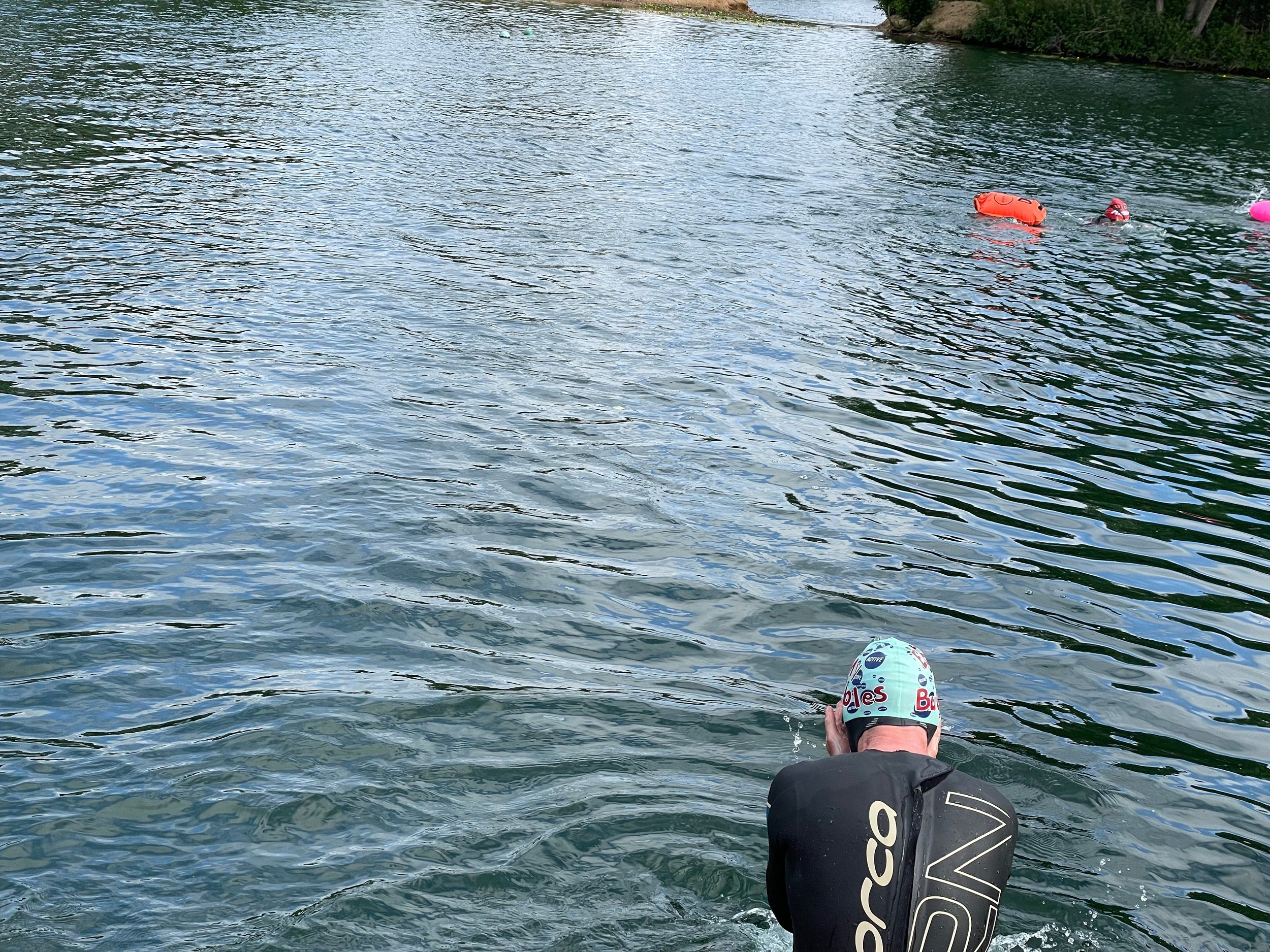How to Race in the Rain
As we seem to have had two back-to-back washout weekends for British racing, coach Philip discusses how to prepare to race in the rain in this latest article.
Racing in the rain is something that very few actually enjoy. Part of this is to do with the actual conditions, and part of this is to do with their confidence in their skill set. This article will explore both and the third contributing factor, managing expectations.
Firstly, racing in the rain has a negative impact on athletes due to one significant factor. It is wet. A wet course can mean that it is more treacherous on the bike and slippier underfoot. However, it also adds further second-order complications due to the weather. First of all, athletes are more likely to get cold when it is wet. This is especially true in the UK, although it may not be true if you look at racing somewhere warmer.
The conditions will mean you must race differently and take slightly longer, especially on the bike, for various reasons. Wet road surfaces are slippery; there can be deep standing water, puddles can hide potholes, more gravel, or other things washed on the road; the attitude and riding skills of other athletes, and in some places, if there has been no rain for a long time, the roads will be slippy because all the oil from the road surface will come out with the water. As a result, athletes should manage the course appropriately, take fewer risks in key areas, and accept they could go faster on a dry course but not try and chase that time.
Clearly, the swim is unlikely to be impacted by rain unless there is a change in water temperature, impacting the wetsuit rules or potentially more run-off into the water, which could reduce the water quality.
Running also may have several additional consequences. Like cycling, the running route can get slippier, especially later, as more people run on the route. On the road, this is unlikely to be as much of an issue for athletes; however, athletes should consider their shoes for racing, especially if sections are off-road. There is no point in being a strong runner or leader off the bike only to lose it because you can’t get a grip or traction with your shoes!
The secondary consequence of racing in the rain, especially in the UK, is that you will likely get colder. Depending on the length of the race and conditions, you may choose to add layers to stay warmer. The longer the race distance, the more important this aspect of planning is. This is partly because the intensity that you are racing at is lower, so you generate less heat. As a result, you will burn fuel to stay warm rather than using that fuel for your exercise. Regardless, if you suffer in the cold, consider adding base layers, arm warmers, jackets or, in the case of people who get particularly cold, gloves to keep your hands warm. This enables you to execute a good transition onto the run. Additionally, you can use your bike brakes, use the gears, grab water bottles etc., all of which will build your confidence in your ability to ride a bike.
The perceived temperature of the event will also impact your fuelling strategy. If you are racing longer distances, you will have a nutrition strategy. When it is wet, people tend to drink less and are less aware of how much they are sweating. Both these impact the way that you deliver your nutrition strategy. This is why sometimes putting on some extra layers to stay warm has its benefits, even if it slows you down. Your nutrition strategy will be better aligned to the situation if you keep your core temperature warm or at least the same or similar temperature to which you were planning to race. However, you may need to consider making adjustments. Therefore, it is very important that you understand your nutrition strategy and its flexibility when racing in different temperate climates or in events where it may vary through the day.
One of the biggest consequences that people have when racing in the rain is their confidence in their own skill set to be able to perform. If you have never ridden in the rain or ridden hard in the rain, then you are unlikely to have the skills to be able to race effectively in the rain. Therefore, riding on the turbo trainer instead of outside when there is inclement weather is a missed opportunity to improve your bike handling skills or even your running skills for racing outdoors.
Riding outside and challenging yourself in the rain is the best way to improve your performance in wet conditions. Additionally, if you have the chance to do a course recce, so you know the descents, the corners and the routes, it will help you make calculated risks on the course and ensure you don’t miss out on opportunities to push which you would only know by having the “home-side” advantage. Additionally, practising in those conditions allows you to build confidence in the kit that you have, in your skills, in using your kit or equipment, and therefore impacts your ability to adapt to the surrounding environment. Most importantly, it also helps you react to other athletes on the course. You can work around their lower skill set and enable your performance to shine through and be less affected by others.
Finally, due to many of the points above, athletes tend not to like it when it rains. You can win the mental battle by making racing in the rain your strength. It will change your mentality and your body language and mean you start the race ready to take on the others on your terms. You will be surprised how much a bit of confidence and positivity can take you a long way around the course when other people’s heads are down and worrying about conditions they can’t change and skills they won’t now have time to practice for. Make this the time when you shine brightest.

Philip is the founder of Tri Training Harder LLP. He’s a British Triathlon Level 3 coach, and has been coaching for over a decade and is involved with mentoring and developing other coaches.
Philip has have coached athletes to European and World AG wins, elite racing, many Kona qualifications, IRONMAN podiums and AG wins.
Alongside the conventional development through many CPD courses, he has also been fortunate enough to work alongside experts in the fields of Physiotherapy, Strength and Conditioning, Nutrition, Psychology, Biomechanics, Sports Medicine. Putting this knowledge into practice he has worked with thousands of athletes to various degrees, from training camps in Portugal and around Europe, clinics in the UK and online coaching.
Visit Philip's
Coach profile
We’re here to help
Tri Training Harder are one of the leading Triathlon coaching providers in the UK, using our wealth of experience to unite scientific and technological research with already well-established and successful best practices, to create a formula for triathlon and endurance coaching that works.
The result is an honest, dynamic, yet simple new way of constructing an athlete’s training to allow them to reach their potential.
If you’re planning your next season, just starting out in the sport or are looking for extra guidance at the very top end of the field, we are here to help, and our coaches would be delighted to hear from you. You can contact us via the website, and one of the team will be in touch.

